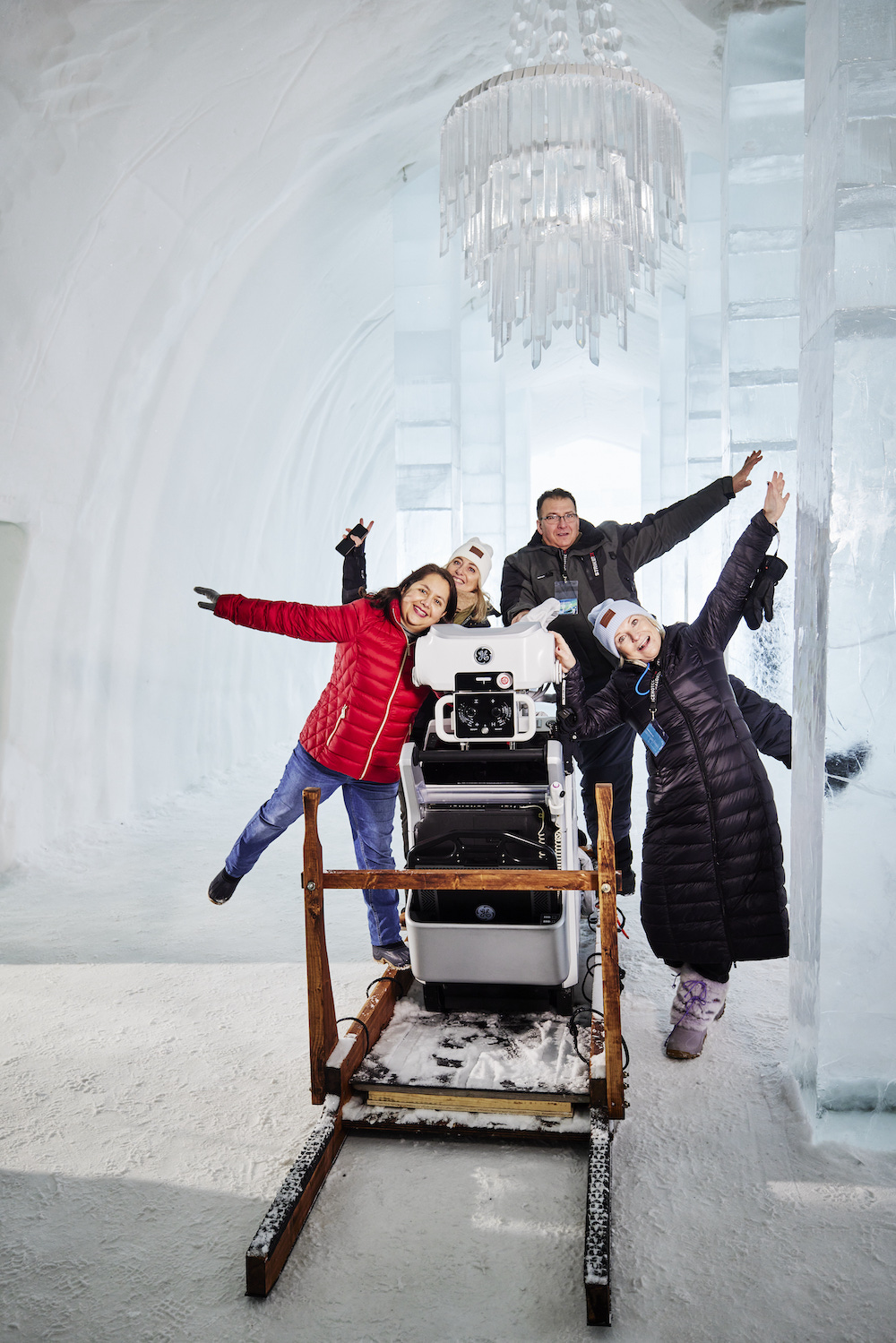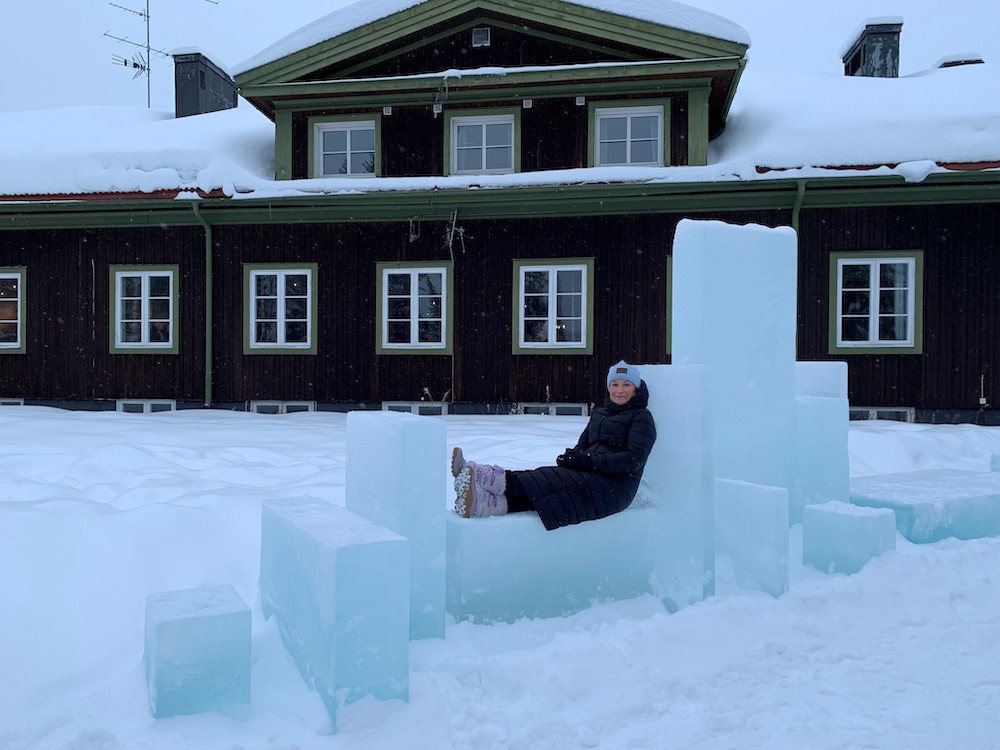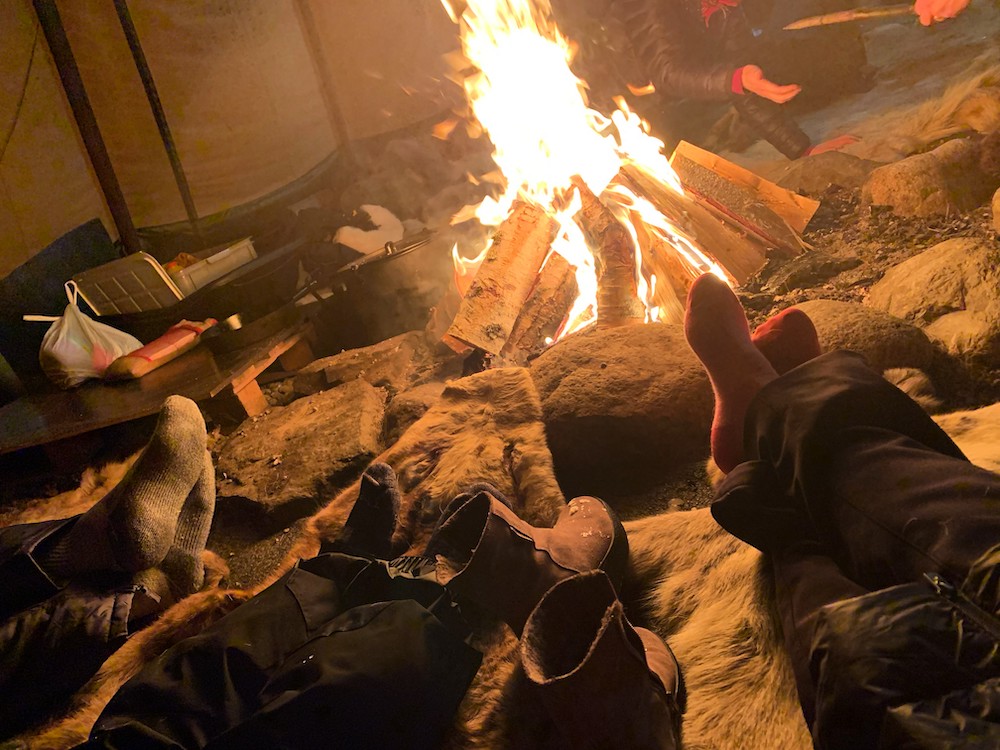It’s a dark, frigid, and eerily quiet day in Swedish Lapland, more than 200 kilometers (125 miles) north of the Arctic Circle. Suddenly the peaceful morning is interrupted by the panting of 12 black-and-white huskies pulling a sled loaded with an X-ray machine that weighs more than 500 kilograms (1,100 pounds). Rocketing across a snow-blanketed field, the dogs are undeterred by the -35 C (-31 F) temperature. The Arctic chill is exactly why GE HealthCare’s portable X-ray, the AMX Navigate,[1] is here, in Kiruna, Sweden.
In 2021, the team took its latest portable X-ray system to Furnace Creek, in California’s Death Valley, one of the hottest places on earth, where the X-ray system powered along sweltering roads that registered temperatures of 75 C (168 F), while the ambient air was 49 C (121 F).
Now they have taken it through yet another test of extremes by going to one of the coldest places on earth to weather snow, chase daylight, and find out if the system is up to the challenge.
An X-ray Designed for Care Teams
Working in healthcare can take a toll on a person’s health. In a 2020 study, 62.6% of radiologic technologists polled said they’d experienced occupational injuries, mostly involving muscles.[2] That’s because their role is both physically demanding and repetitive: They’re lifting patients, twisting and bending to position equipment, and pushing heavy devices.
“The work of radiologists and technologists is so important, and so many are close to burnout as they’re pulled in so many directions,” says Cecilia Olsson, women’s health and X-ray product life cycle manager and patient advocate at GE HealthCare’s office in Buc, France.
To help ease some of those demands, GE HealthCare consulted with technologists while designing its latest portable X-ray technology. Aiming to reduce physical stress and strain in healthcare workers, the AMX Navigate features a power-assisted telescoping column and compact size, designed to meet patients where they are, while also supporting the care teams putting the technology to work through its enhanced maneuverability and workflow efficiencies, all while producing high-quality images.
“Today you hear so much about patient centricity and how healthcare is adapting to patients, and that is important,” says Olsson. “It’s also very important that we care for healthcare teams too. With technologists, that means protecting their backs through improved ergonomics and helping them gain time in the workflow through innovation.”
In addition to these important design considerations, the AMX Navigate is also the first of its kind to use on-device artificial intelligence (AI), called Critical Care Suite 2.0, which allows for automated measurements, case prioritization, and quality control to help improve care and augment radiologist and technologist work.
Putting the AMX to the Test
The trek to the Arctic not only had scientific significance as a test of extremes — it also had personal significance for Olsson, because she grew up in this part of Swedish Lapland, known for its views of the midnight sun and the northern lights. “It’s nine months of winter,” she says of the veritable snow globe, where reindeer roam and dogsledding is reliable transportation. “When I was a kid, the average temperature was -34 C to -40 C (-29 F to -40 F).”
Although she’d moved from Kiruna to Paris as a teenager with her mom, Olsson still has family and friends there, and was able to help make the arrangements needed to give the X-ray system extreme treatment. After she ordered the custom-built dogsled to support the equipment and enlisted the help of 12 dogs for transportation, the AMX Navigate was ready for its trek to the Icehotel, a famous landmark hand-sculpted each year from enormous ice blocks. Then, on a dark and cold February morning, the AMX Navigate began its trek by dogsled and then by road, through the blindingly cold terrain, past towering mountains and curious reindeer and through the icy doorway and halls of the ice hotel.
So Was It Up to the Challenge?
The system, says Olsson, did a stellar job through it all. In fact, it held up better than the crew’s vehicle, which ended up driving off the road during a snowstorm, though fortunately no one was hurt.
“Our team has a number of processes in place to ensure our technology can withstand the challenging hospital environments that rely on it,” says Olsson. “But sometimes you have to think a little differently — not all tests should happen in a lab. It has been fun to take the AMX Navigate on another adventure and bring it to a place I used to call home. These conditions are a stark reminder of just how rugged and tough you have to be to live, and thrive, in these types of conditions. Now take that kind of mindset to the demands on the front lines of patient care in ERs and ICUs every day — I think the AMX Navigate has demonstrated, once again, that it’s up for the challenge.”
The final statistics of this Navigate-ing-the-world challenge? Coldest temp recorded: -35 C (-31 F). Arctic Circle latitude: 66.56. Filming latitude: 67.85. Number of moose spotted: 3. Number of reindeer spotted: too many to count.
Who knows where the AMX Navigate will adventure to next …
REFERENCES
[1] The AMX Navigate is 510(k) cleared by the U.S. FDA. Not yet CE marked. Not available for sale in all regions.
[2] Dan A. Macavei and Kevin R. Clark, “Occupational Injuries Involving Medical Imaging and Radiation Therapy Professionals,” Radiologic Technology 91, no. 5 (May 2020), https://pubmed.ncbi.nlm.nih.gov/32381660/.





